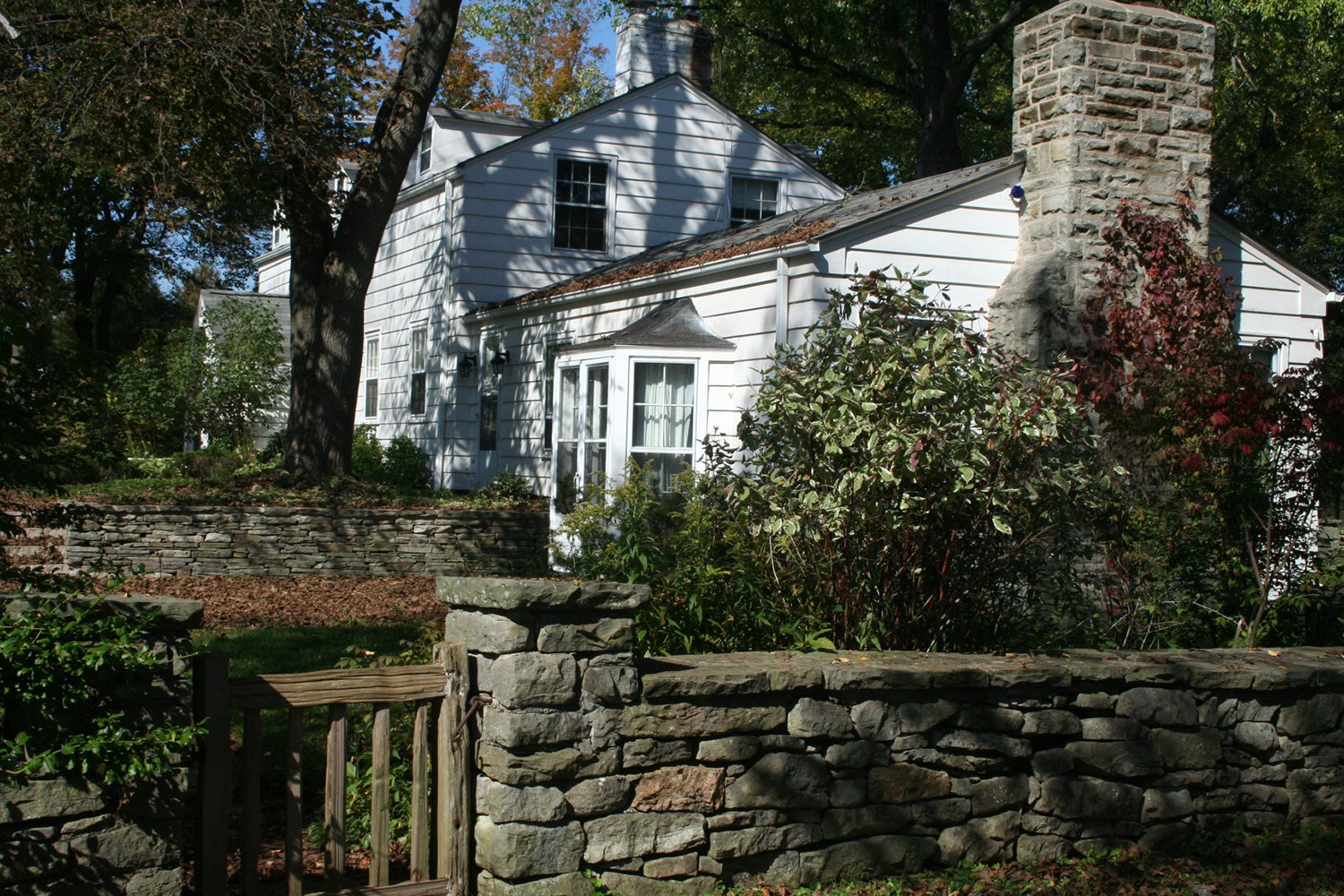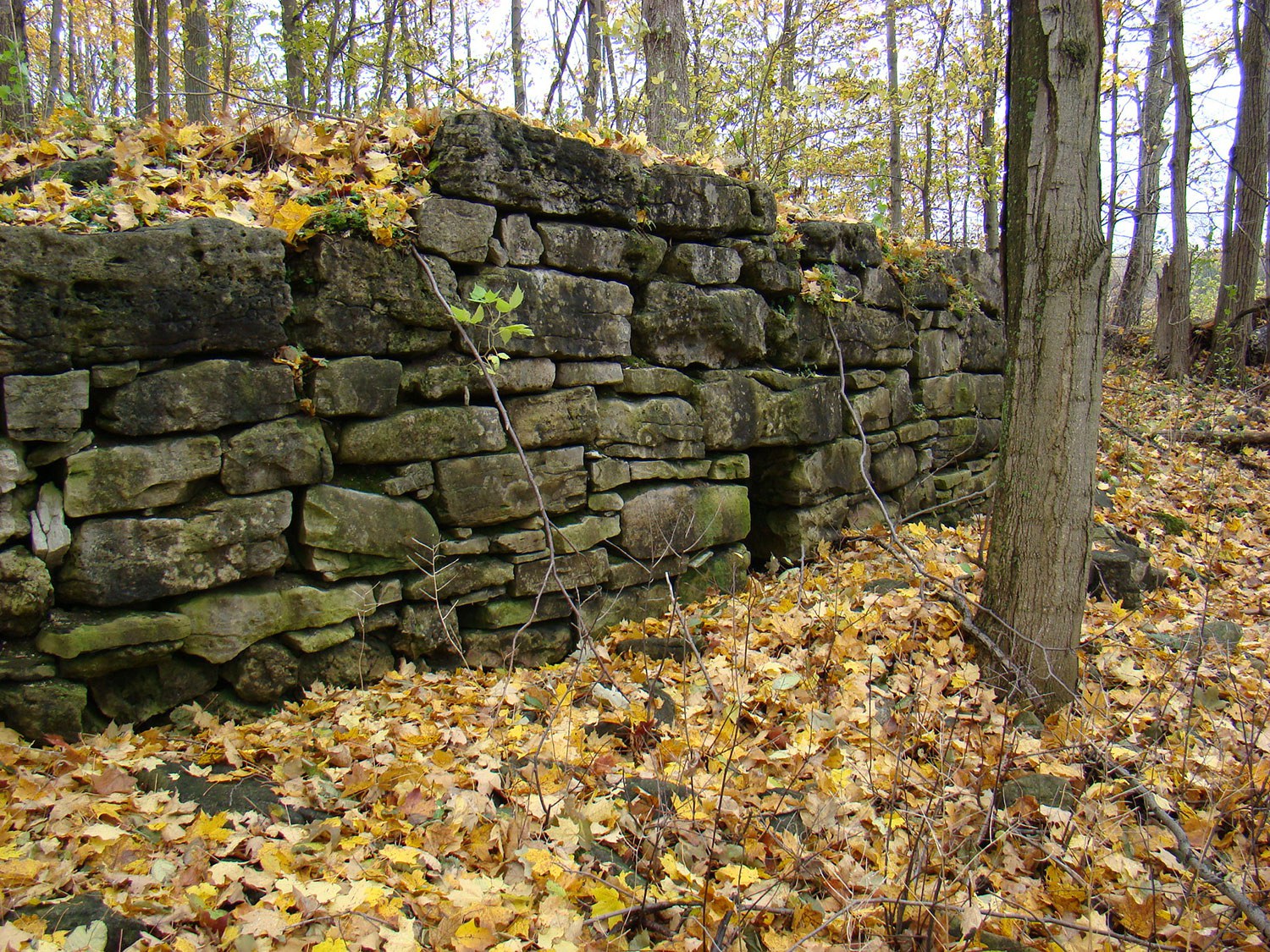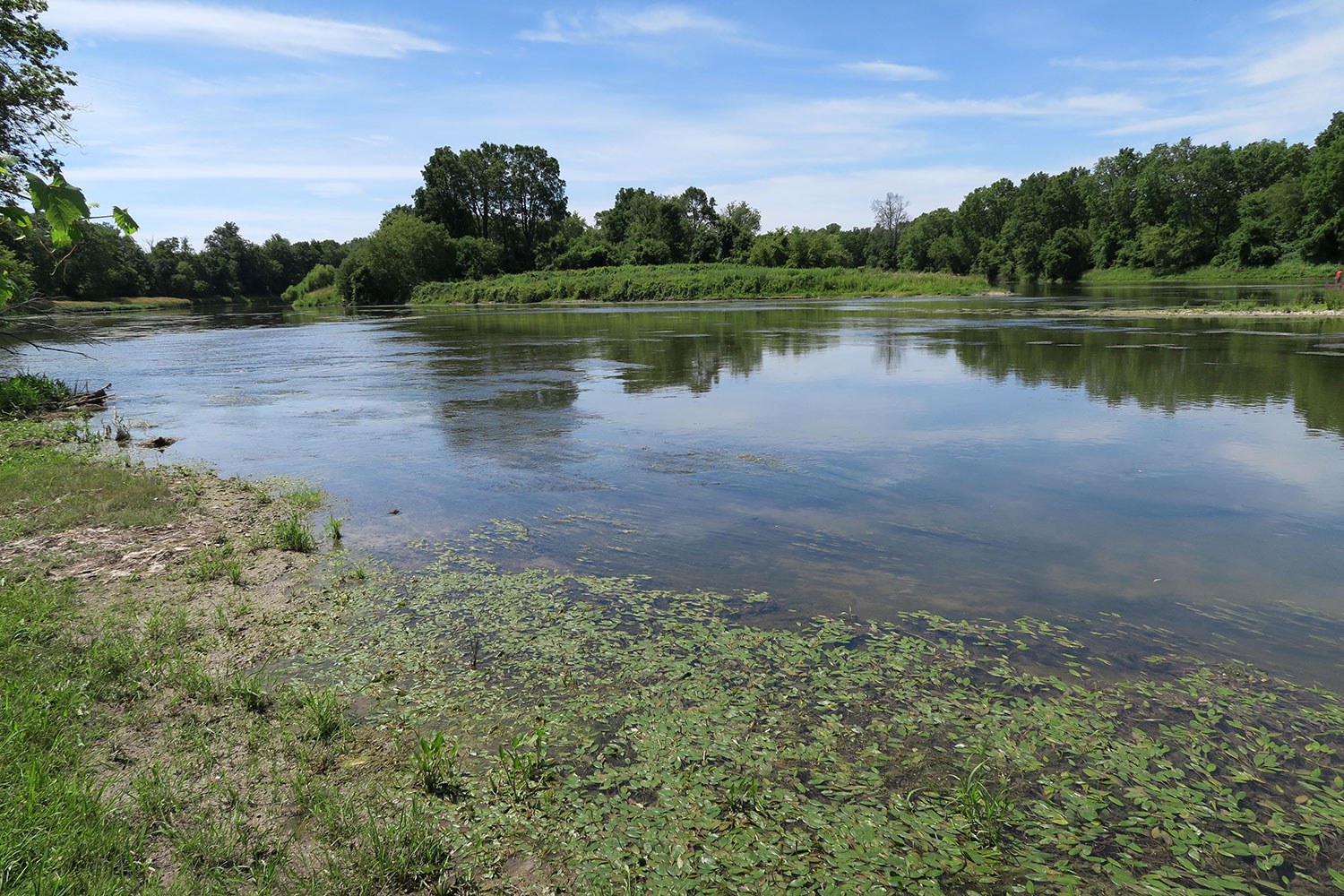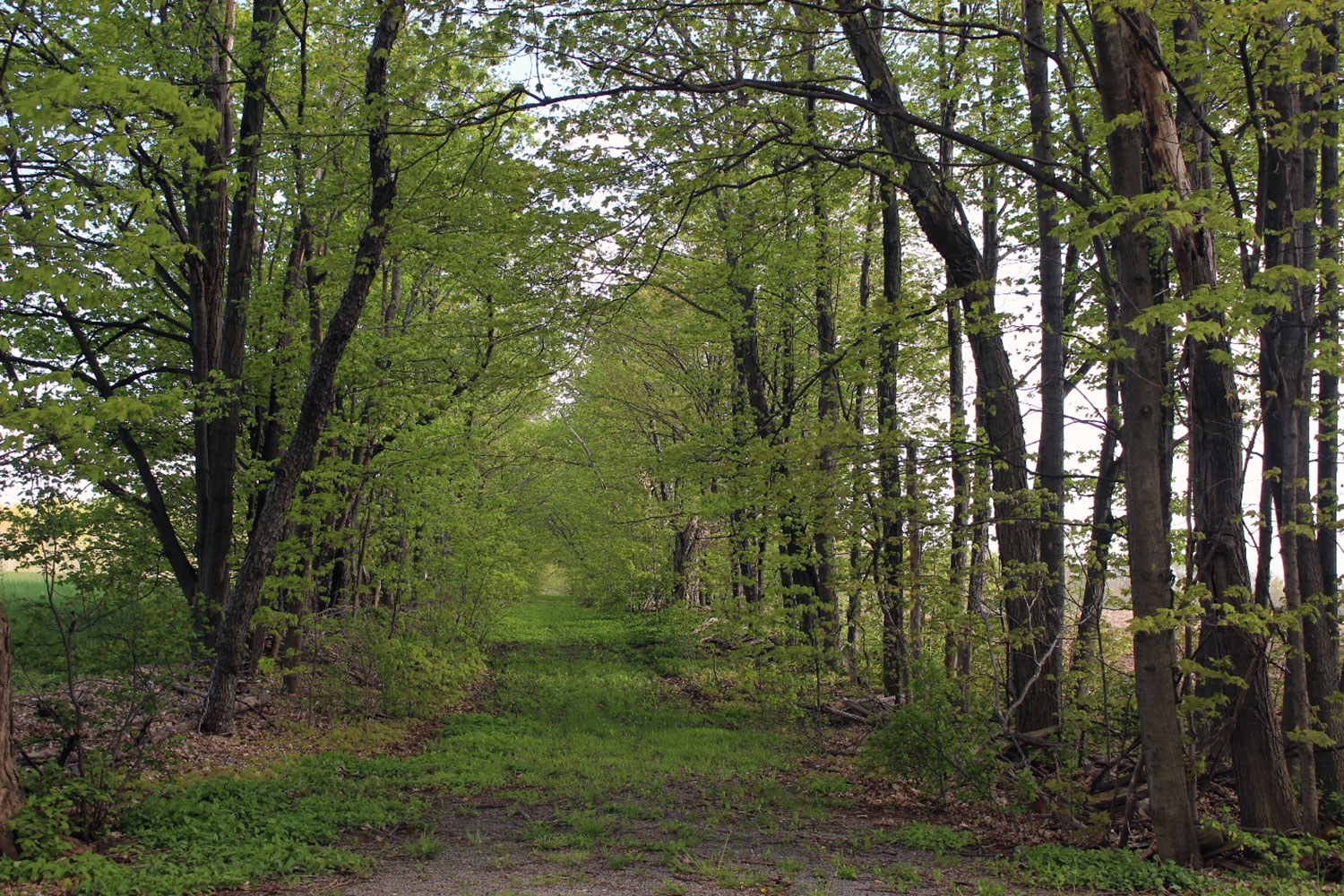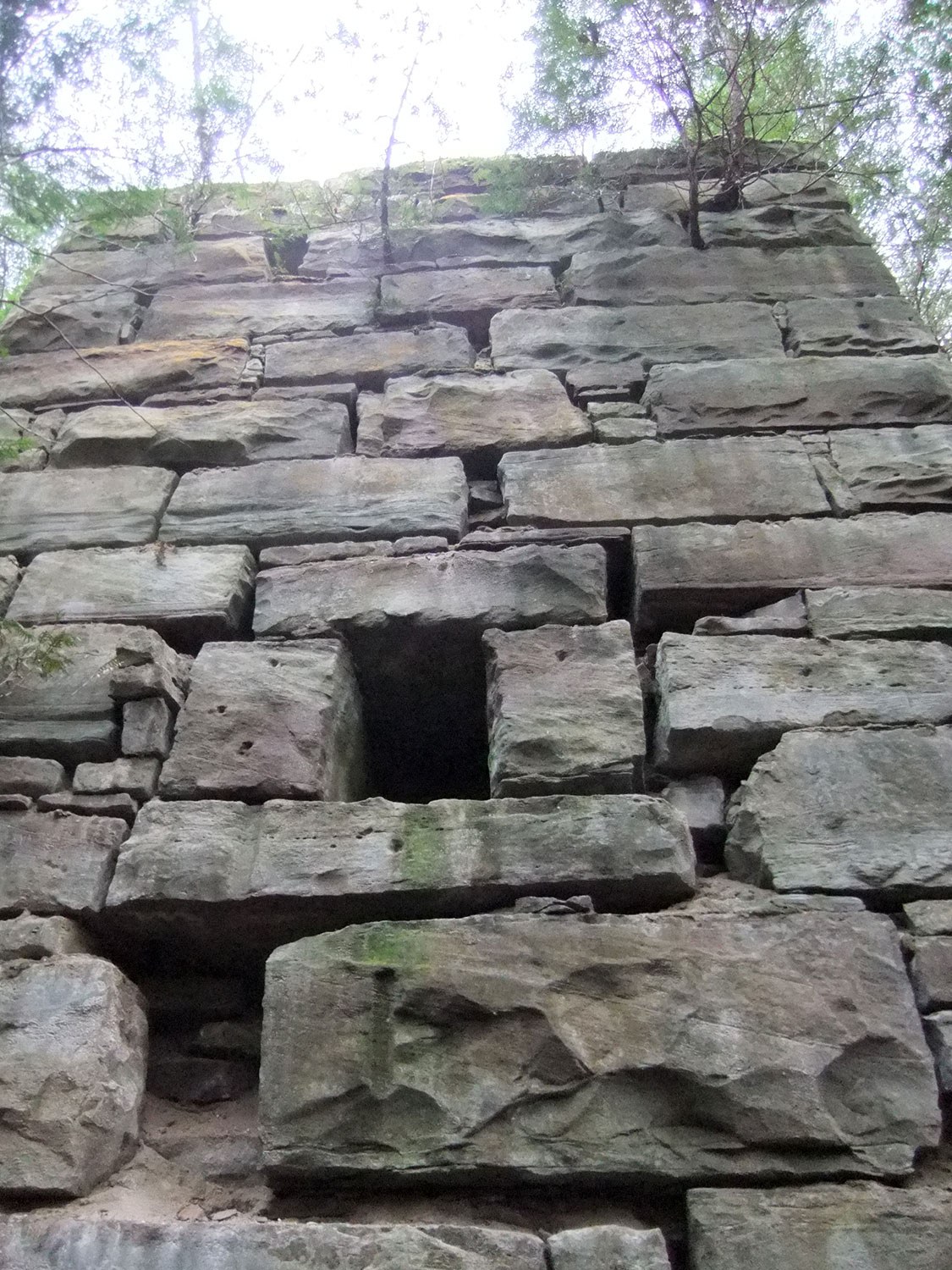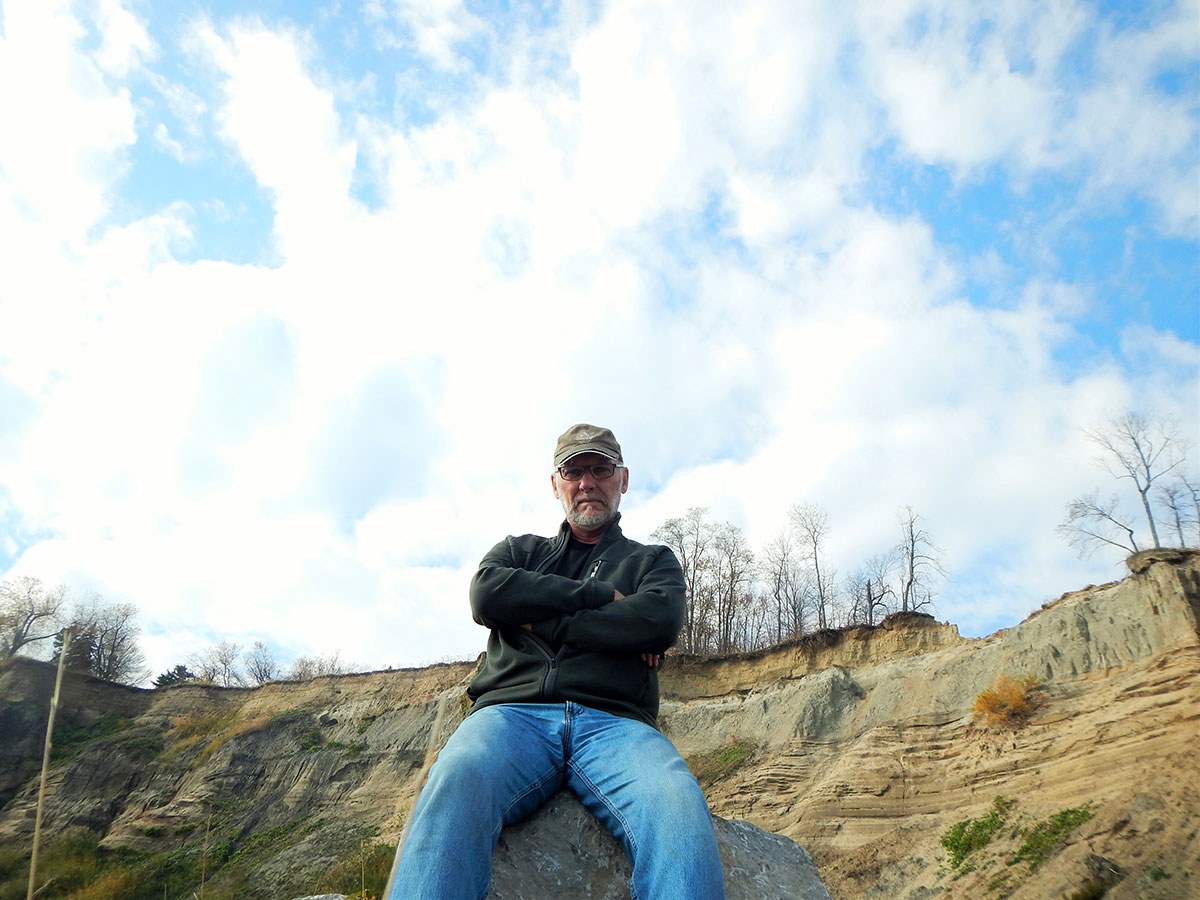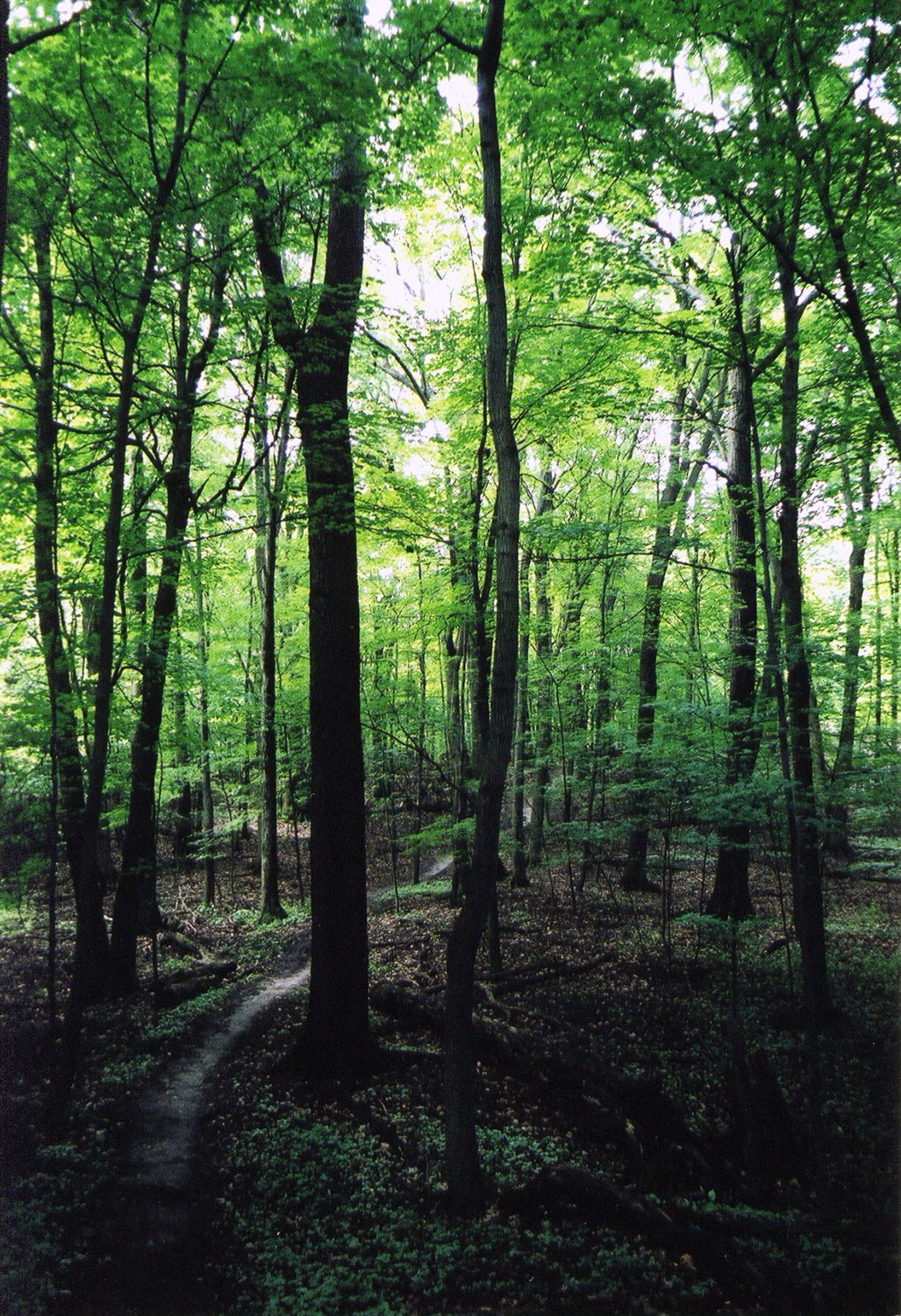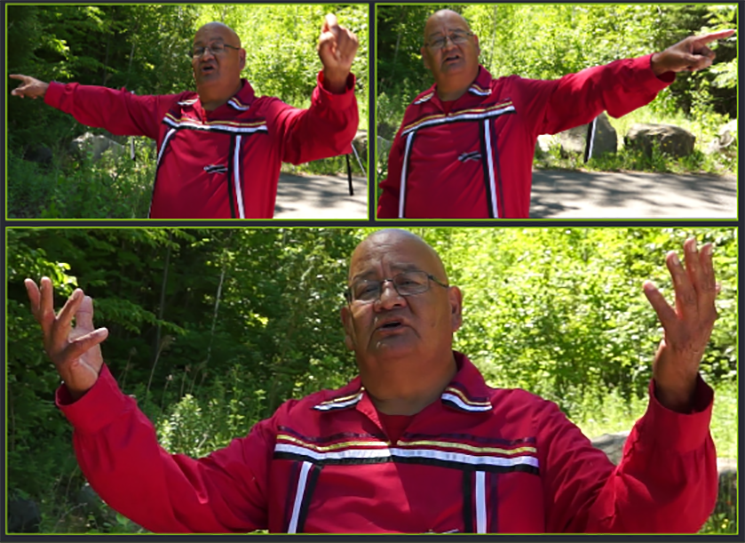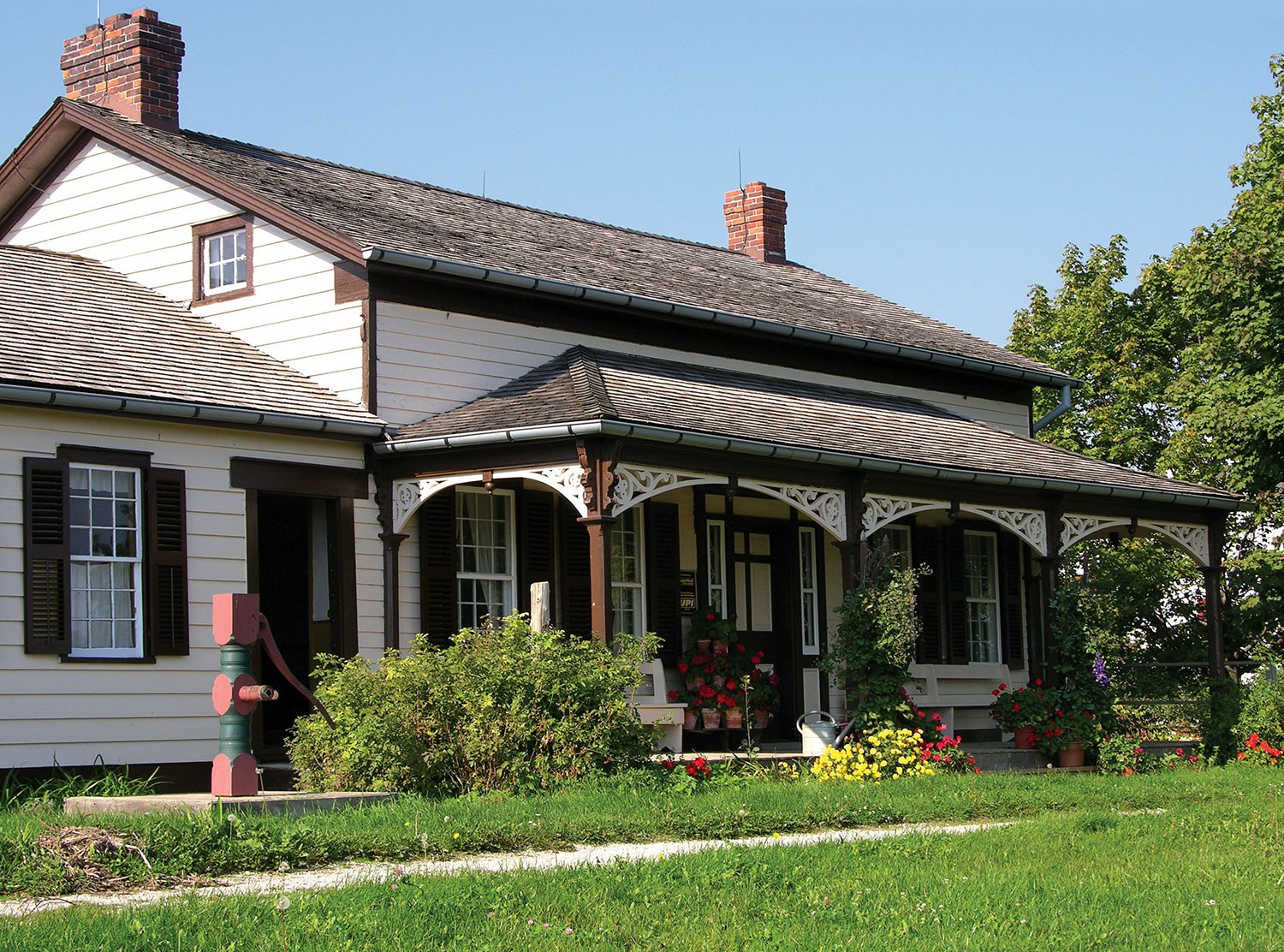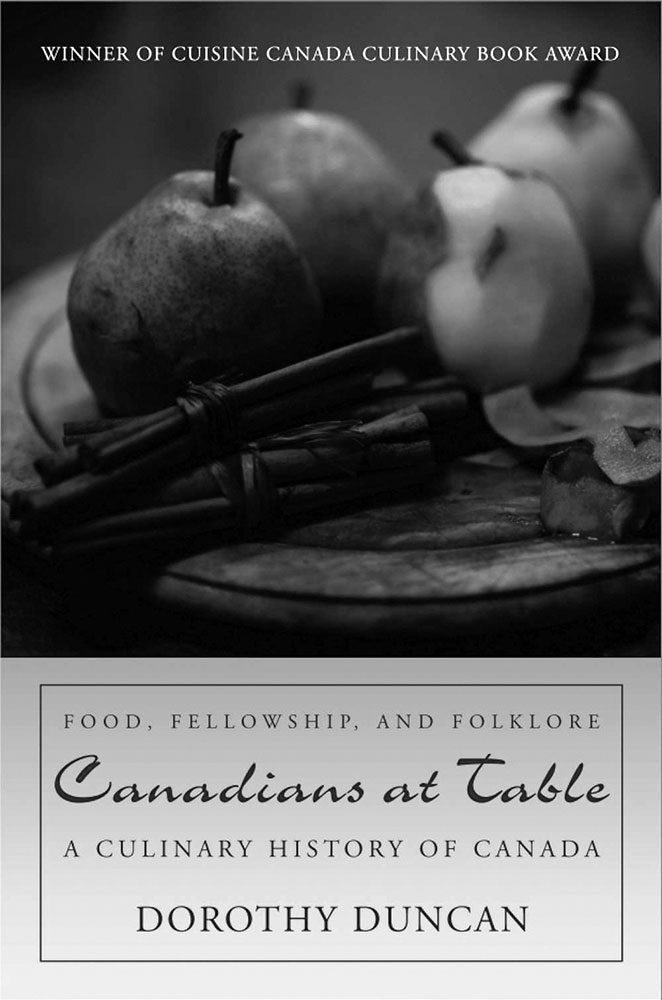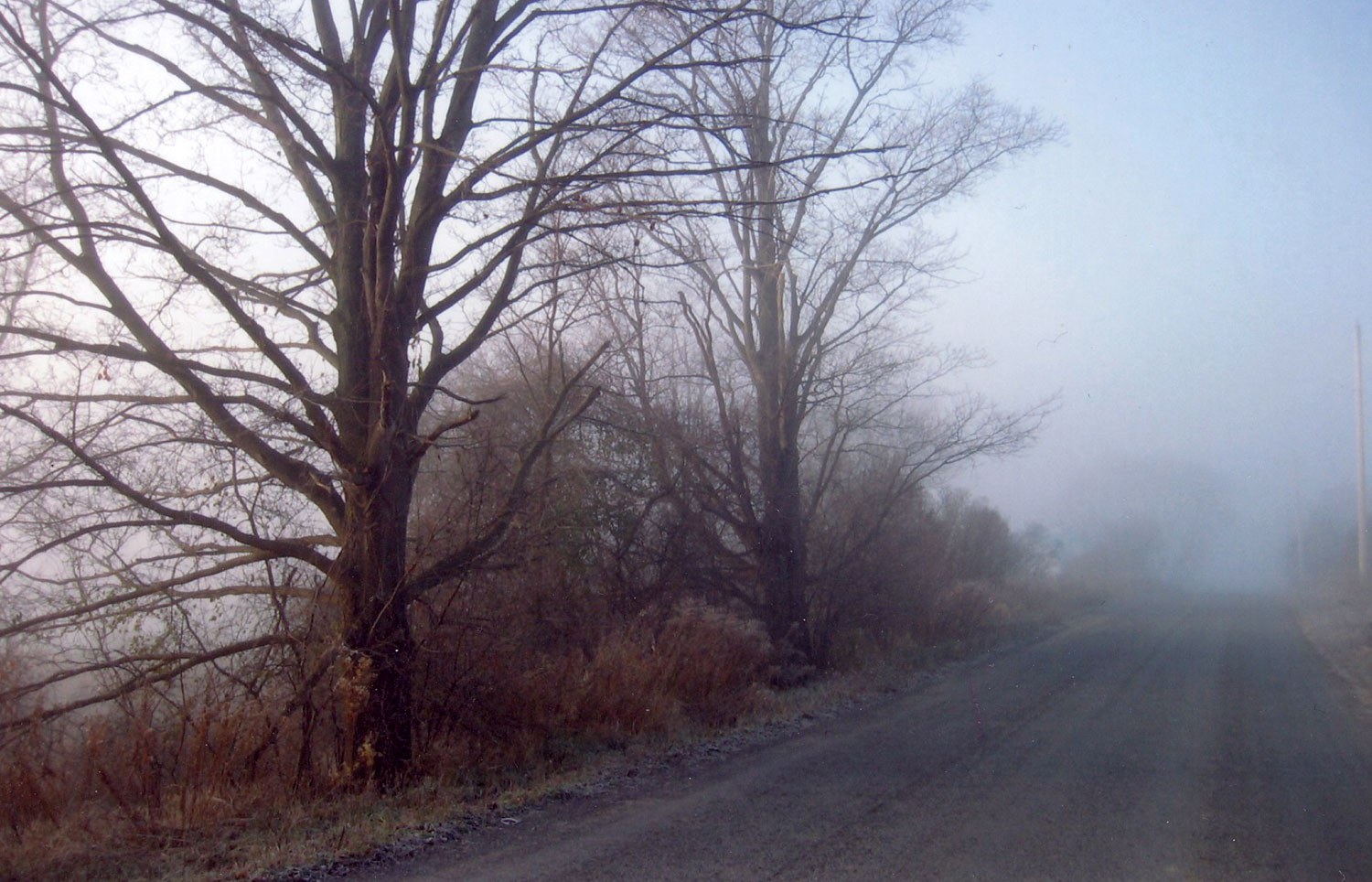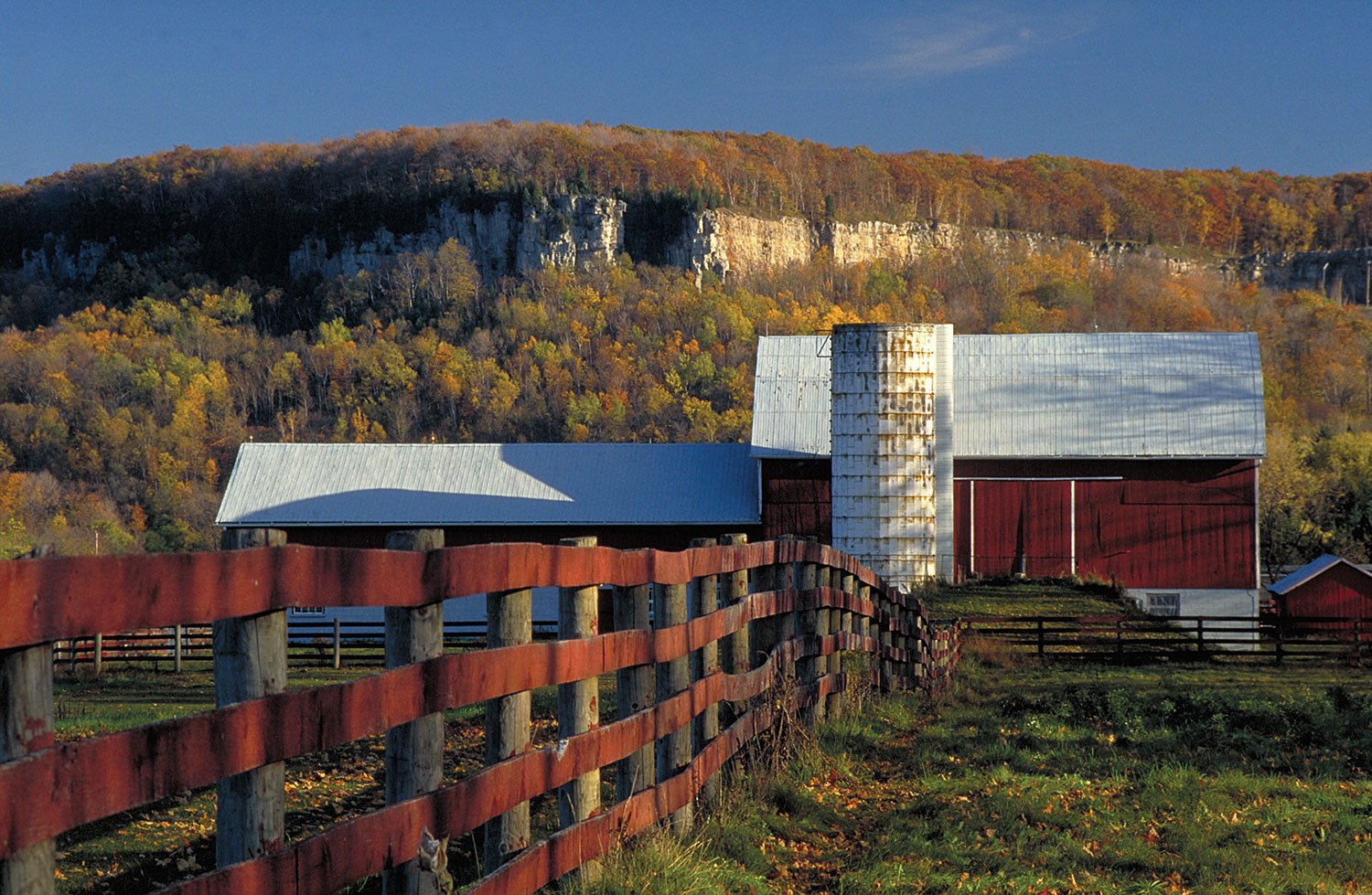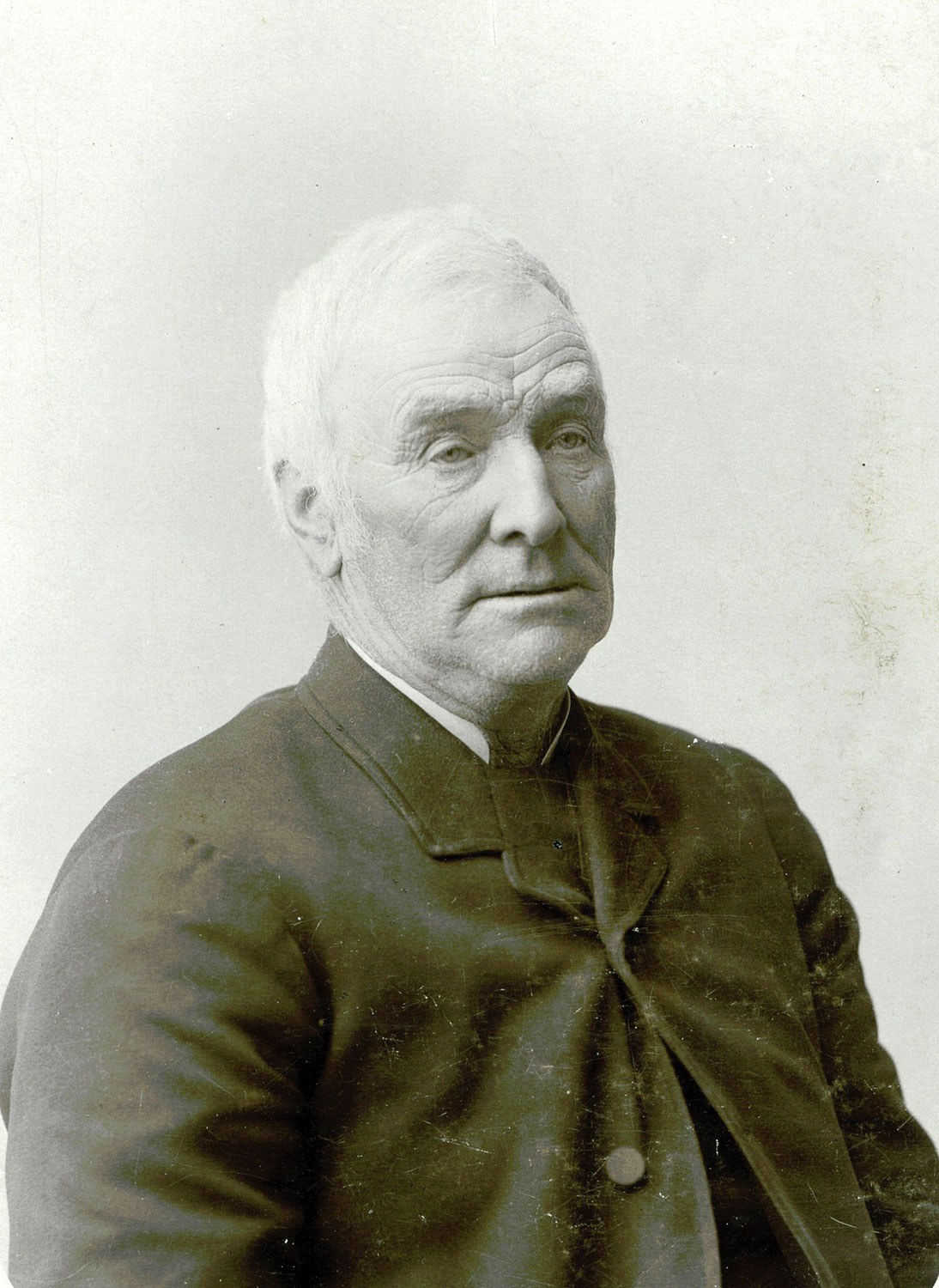

Browse by category
- Adaptive reuse
- Archaeology
- Arts and creativity
- Black heritage
- Buildings and architecture
- Communication
- Community
- Cultural landscapes
- Cultural objects
- Design
- Economics of heritage
- Environment
- Expanding the narrative
- Food
- Francophone heritage
- Indigenous heritage
- Intangible heritage
- Medical heritage
- Military heritage
- MyOntario
- Natural heritage
- Sport heritage
- Tools for conservation
- Women's heritage
Scotsdale Farm – An experience of interwoven landscapes
Dust stirs up behind the car, shaken by the audible crunch of rubber on gravel as we drive slowly along the fenced laneway leading east from Trafalgar Road. The sweet aroma of freshly cut hay wafts into the car long before its source can be seen. Falling away to the north is a recently mowed field of golden grassy stubs, while to the south the undulating meadow is awash with wildflowers and grasses in full bloom. As we start to descend a gentle ridge, the laneway enters into the tree canopy like a train passing into a tunnel. With windows open, we are swept by air still cool in the morning shade. To our right, the ridge continues into the forest on a gently sweeping pathway. Ahead and to the left, through gaps in the alleé, fragmentary snapshots of faraway buildings can be seen growing ever closer. On the opposite side, sunlight sparkles through vestiges of split rail cedar fence. In the meadow below, dew shimmers in the fleeting shadows at the forest’s eastern edge. At the base of the ridge, where the lane turns sharply to the left, we pass a circuit of dry laid stone walls that frame a sprawling white farmhouse. Mature trees, barns and a silo form a pastoral backdrop. Curling around and into the parking lot, we pass a woman with a dog returning from a morning hike. After parking and exiting our car, we are drawn intuitively to the east along a wide gravel walkway that passes between a low stone wall on the right and a white clapboard guest house to the left. We’ve arrived at Scotsdale Farm.
Recreational hikers arriving at the farm on a sunny summer morning typically begin their experience in a manner consistent with the above description. But Scotsdale is much more than a historical farm crossed by scenic hiking trails. The 215-hectare (531-acre) site is a collection of natural and cultural landscapes and, more than at most heritage sites, Scotsdale’s cultural landscapes can’t be fully understood through photographs, maps or reports. These landscapes co-exist sharing the same space, but have different associative communities, features, uses, narratives and meanings. The best way to grasp the complexity and charm of the place is to experience it firsthand, using all senses. The experiential approach also informs how one stewards and conserves this heritage site by considering its values and features holistically.
Owned and stewarded by the Ontario Heritage Trust, Scotsdale Farm is located in Georgetown on the brow of the Niagara Escarpment. Scotsdale’s diverse geography is the product of millions of years of incremental change by glacial, fluvial and tectonic forces. At much faster rates – and more recently – the landscape has been crafted, worn and marked by human activity. This includes the daily impact of recreational visitors on the trails and infrastructure, the field patterns and buildings created by 20th-century livestock farming, physical remnants of two early European homesteads, the ruins of a 19th-century sawmill and lime kiln, and the archaeological legacy of First Nation farmers, hunters and gatherers.
The preservation of Scotsdale Farm was made possible through the generous donation of the property in 1982 to the Trust by Stewart and Violet Bennett. It was the Bennetts’ wish that their farm be used to provide public access to the natural and scenic wonders of the escarpment. Indeed, the natural heritage of Scotsdale is both expansive and, in some cases, highly fragile.
The lands are traversed by two environmentally sensitive watercourses – Silver Creek and its tributary Snow Creek. The property features provincially significant wetlands and dense forests that provide valuable wildlife corridors connecting to adjacent conservation lands. In addition, Scotsdale includes habitat for 12 rare plant species as well as rare animal species, including bobolink, redside dace and Jefferson salamander. All of Scotsdale’s cultural landscapes – recreational, agricultural, archaeological and architectural – are closely integrated with, and affected by, these natural systems.
Portions of the farm remain in agricultural use. The farm manager’s house is tenanted. Cattle, so important to the Bennetts, are still raised and a number of fields remain in hay production. The Toronto Club of the Bruce Trail Conservancy manages 3.5 km (2 miles) of trails, including the Bennett and Maureen Smith side trails. In recent years, a local volunteer organization has been formed – the Friends of Scotsdale Farm. The Friends diligently watch over the farm, regularly monitoring and reporting site conditions while working with the Trust to educate visitors and help steward the site.
Scotsdale is a magical place, combining watercourses, farm fields, wetlands and forests with treed lanes. It’s also a designed architectural landscape. Independently, none of these landscapes is unique. As a diverse network of landscapes, however, layered over time and place, Scotsdale Farm is a rare survivor. By far the most common fate for places like Scotsdale – located close to urban centres – is to be subdivided for residential development. In other instances, sites like Scotsdale might be merged with larger industrial farms, kept in private ownership with virtually no public access, or transformed into so-called nature reserves, resulting in the eradication of the cultural landscapes. Fortunately, the landscapes at Scotsdale remain both legible and publicly accessible.
The Trust takes an integrated approach to the conservation and stewardship of its sites. At Scotsdale, this means simultaneously considering and valuing the site’s historical, scenic, recreational, archaeological, architectural and natural values and interests. Not unexpectedly, this approach comes with challenges. Maintaining the farm structures and buildings while seeking viable and appropriate uses that are compatible with the agricultural character and environmental sensitivities of Scotsdale is an ongoing, complicated and – at times – expensive responsibility. Sometimes, operational changes are necessary in order to protect a specific heritage value. For instance, in recent years the lane into the farm from the 8th Line was closed to vehicle traffic to improve pedestrian safety, ensure site security and protect the endangered Jefferson salamanders that seasonally cross this lane to breed in the adjacent vernal ponds.
What does the future hold for the cultural landscapes of Scotsdale Farm? Each landscape has its own community of supporters – farmers, neighbours, hikers, photographers, naturalists and historians. In many cases, membership in these communities overlap, like their associated landscapes, sharing values and objectives between user groups with no one interest dominating at the expense of another. As the Trust and its partners explore additional, new and sustainable uses for Scotsdale, a focus on the experiential understanding of place and an integrated conservation approach will remain critical to our stewardship of this special place.

